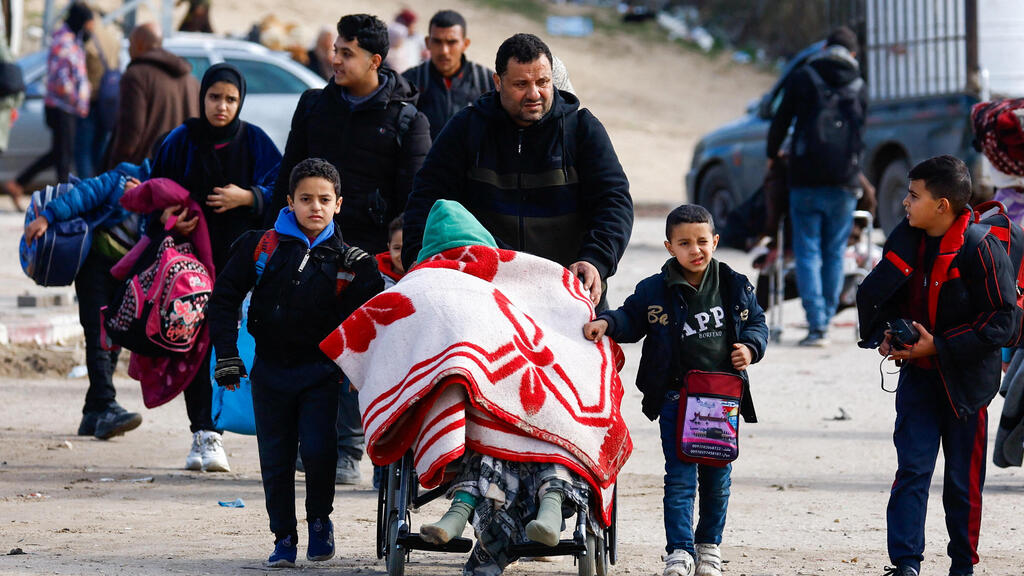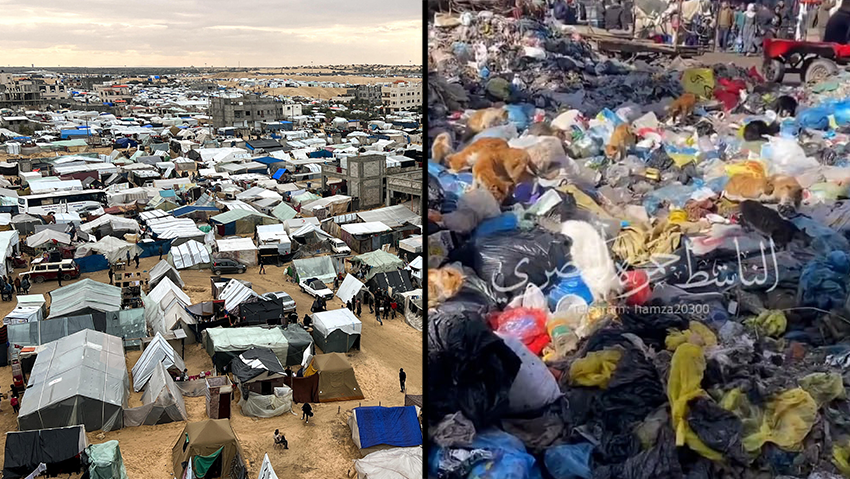Getting your Trinity Audio player ready...
The situation is Gaza is terrible and getting worse with so many displaced and seeking shelter, even tents have become unaffordable.
Read more:
Recently uncovered documents shed light on the challenging conditions endured by the residents of the Gaza Strip over the past four months. In the northern region of the Gaza Strip, heaps of garbage accumulate at the heart of the Jabaliya refugee camp, exacerbating an already overcrowded situation. In Rafah, the level of overcrowding has reached an unbearable point, with the tent city expanding to cover an area of over 1.3 square miles.
Read more:
Videos circulating on social media highlight the challenging economic circumstances faced by the residents of the Gaza Strip, despite the daily influx of aid delivered in numerous trucks. A Gaza-based blogger shared a video on Instagram, explaining that tent prices in Rafah have soared to $800, equivalent to the cost of constructing an entire apartment in the past. Additionally, a new trend has emerged where flip-flops are rented by the hour, charging $0.50 per hour.
Selling tents in Rafah
According to the blogger, finding basic necessities has become increasingly difficult, with prices skyrocketing. Diapers, in particular, have become scarce commodities in Gaza. Residents reported that a package of diapers now costs $75, and a trip from the southern region to Gaza City ranges between $200 and $230. Onions are sold in the market for $9 per kilogram, with slightly higher prices for better quality. Lemons, which usually cost $0.50, are now priced between $5 and $6 each.
According to estimates from the United Nations, nearly half of the buildings in the Gaza Strip have been damaged or destroyed. Even if a reconstruction process were to commence immediately, with the same average growth rate observed over the past 15 years, it would take at least seven decades for the Gaza Strip to return to its 2022 GDP level.
A United Nations report concluded the enclave has become uninhabitable due to the extensive destruction caused by the actions of the IDF. The report, issued in November, approximately six weeks after the surprise attack by Hamas that initiated the war and a few weeks into the ground maneuver, estimated that 37,379 buildings in the Gaza Strip were either destroyed or damaged. This accounts for approximately 18% of all structures in the region.
"The latest data reveals that approximately half of the buildings in Gaza have suffered damage or destruction," stated Rami al-Aza, an economist from the UN Conference on Trade and Development, who contributed to the report. Al-Aza cautioned that "as the war persists, the situation will only deteriorate further." During an interview with a French news agency, he further emphasized that "the current state of the Gaza Strip renders it unsuitable for habitation."
A recent analysis conducted by the BBC, which was released yesterday, indicates that over 50% of the structures in the Strip have been impacted or demolished since the commencement of the conflict. Aerial imagery highlights an escalation in bombings particularly in the southern and central regions of the Strip, with Khan Younis being a focal point since December. Based on estimates derived from the same data analysis, it is believed that between 144,000 to 175,000 buildings in the Strip have been damaged or destroyed, accounting for approximately 50% to 61% of all structures in Gaza.
The analysis was carried out by Corey Scher from the City University of New York and Jamon Van Den Hoek from Oregon State University. They conducted a comparative study of images to assess changes in building height and structure, aiming to identify instances of damage. In Khan Younis alone, approximately 38,000 houses, accounting for 46% of all structures, were either damaged or destroyed, with 1,500 of them being affected within the past two weeks.
2 View gallery


Gazans leave Khan Younis to escape the fighting and attempt to reach safety near Rafah
(Photo: Ibraheem Abu Mustafa / Reuters)
The aerial imagery also reveals massive devastation in agricultural areas, including orchards and crops. Local farmers who were interviewed for the report, expressed their concerns about the repercussions on these areas, and some even alleged deliberate targeting. On the other hand, the Israeli military, in response to inquiries from the BBC, said that they identified Hamas tunnel entrances and rocket sites in the agricultural zones.
Meanwhile, the evacuation of residents in the southern regions is still ongoing. An Arabic-speaking spokesperson from the IDF called on residents in neighborhoods situated west of Gaza City, urging them to promptly seek refuge in the shelters located in Deir al-Balah.






